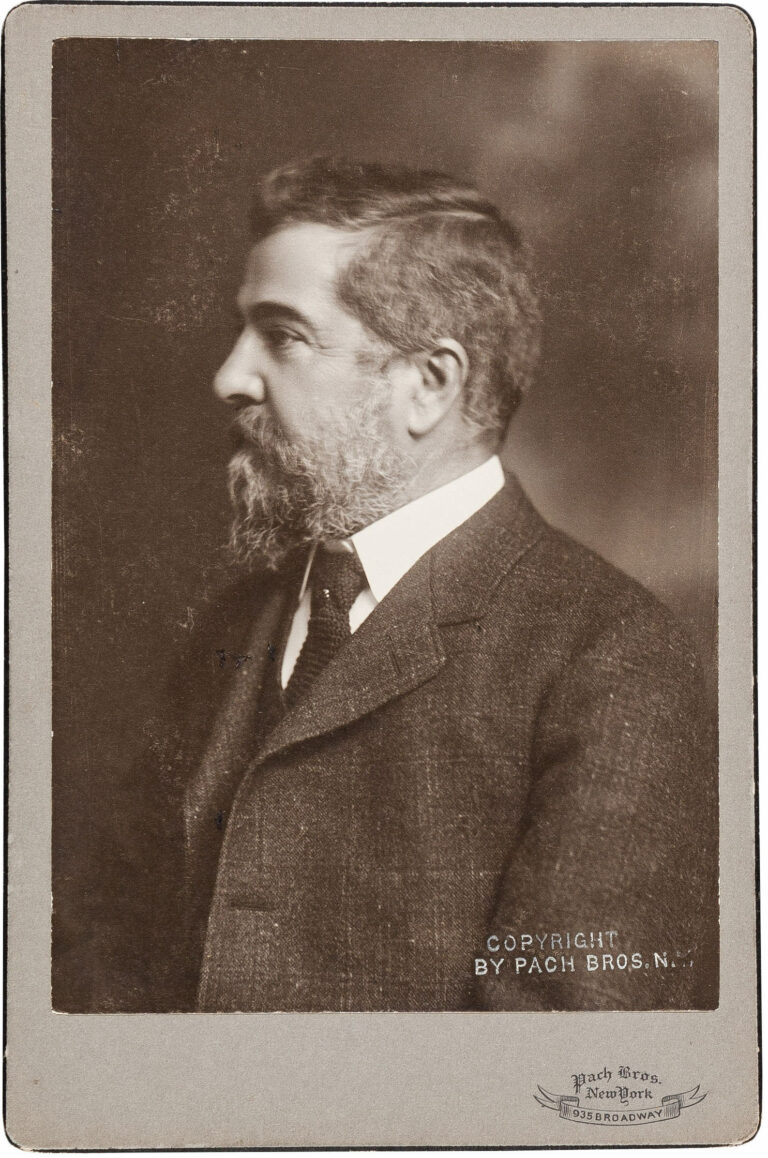Constructed in 1904 for the members of the Jekyll Island Club, Faith Chapel has welcomed visitors for more than a hundred years.
Installed March 25, 1921, this window was created in memory of Frederick Bourne, whose name graces the base of the window. Bourne, President of Singer Sewing Machine Company, was a beloved member of the Jekyll Island Club and even served as its president from 1914 to 1919.
Described as a vivid composition in rich tones, the window portrays the theme “David Set Singers Before the Lord.” David, seated on a throne in kingly garb, appears in the act of commanding the singers to dedicate their music to God. An angel overhead bears a scroll proclaiming “I will sing unto the Lord for He has triumphed gloriously.”
Created by the Ecclesiastical Department of Tiffany Studios in New York City, the window was installed in Faith Chapel on Good Friday and dedicated on Easter Sunday in March of 1921. “Louis C. Tiffany NY” is etched into the right panel, permanently signifying the studio responsible for the masterpiece.
Son of Tiffany & Co. founder Charles Lewis Tiffany, Louis Comfort Tiffany was a well-known artist during the late 1800s, becoming most famous for his “paintings in glass.” While his first creative efforts were in painting, he became fascinated with stained-glass windows while traveling Europe and visiting their churches and cathedrals.
"Color is to the eye what music is to the ear."
Louis Comfort Tiffany
Most nineteenth-century stained-glass windows were painting applied to clear glass with a brush. Tiffany continued to paint glass but also invent new techniques for the production of his stained-glass creations. The glass from Tiffany Studios was completely American in design, unlike anything that had come before. Tiffany Studios produced approximately 25,000 windows in America between 1883 and 1931. Faith Chapel’s radiant Tiffany window is considered “among the most vibrant Tiffany’s ever made.”

From the heart pine flooring to the copper tip of the steeple, the combined elements immerse guests into Faith Chapel’s Club-Era past.
Stained cypress shingles grace the interior and exterior, and unique architectural features, such as gargoyles, highlight its gothic-revival style.
Designed by Tiffany-apprentices and father-daughter team Maitland and Helen Armstrong, this stained-glass window is centered on the east-facing wall of Faith Chapel and depicts the life of Christ.
The Jekyll Island Authority remains committed to the preservation of the island’s historic resources with a dedicated team of on-staff specialists. Future efforts are planned to ensure Faith Chapel is preserved for generations to come.
In partnership with the Jekyll Island Authority, Friends of Historic Jekyll Island (FOHJI) helps protect and preserve the historic structures on Jekyll Island, including Faith Chapel.
The not-for-profit organization has supported a wide range of historical enhancement projects throughout Jekyll Island’s National Historic Landmark District with volunteering and financial assistance, including securing funds for the conservation of Faith Chapel’s Armstrong window.
In 2021, the Jekyll Island Authority requested an appraisal of the Bourne Memorial Window by a team of stained-glass specialists. Listen to Neal Vogel of Restoric in Chicago, Illinois present his initial findings below.
According to the final report, the window “remains in remarkable condition for a 100-year-old art glass window; especially considering Jekyll’s exposure to Atlantic storms and hurricanes and in consideration that it was housed in a neglected, underutilized building during the mid-20th century.” The primary concern, the group found, is the exterior wood frame housing the window, which has subjected the art glass window to dirt and moisture infiltration.
From history tours to wedding ceremonies, Faith Chapel continues to astound and inspire its guests.
Explore opportunities with Summer Waves Water Park, Georgia Sea Turtle Center, landscaping, retail, golf, and more.